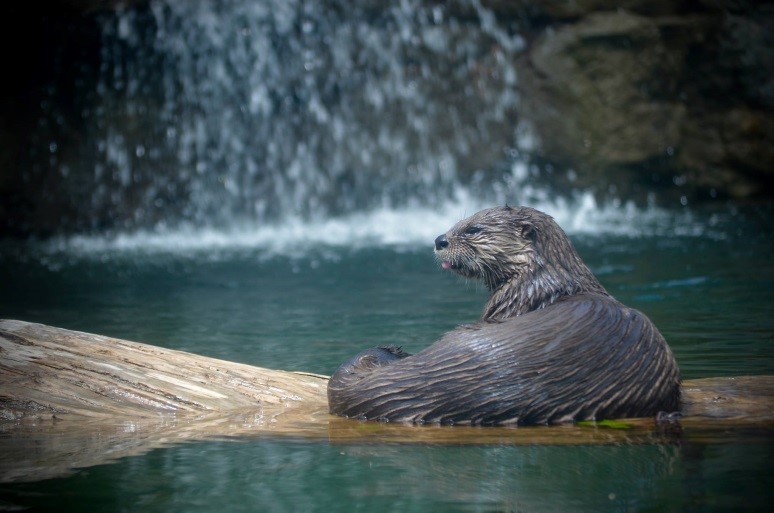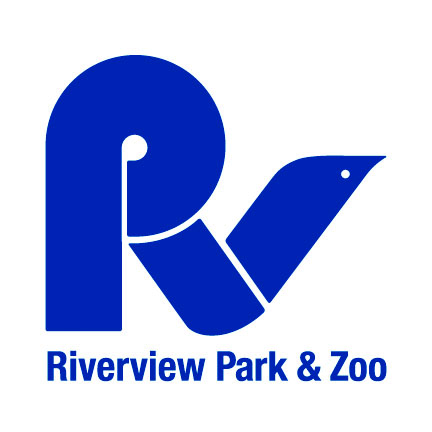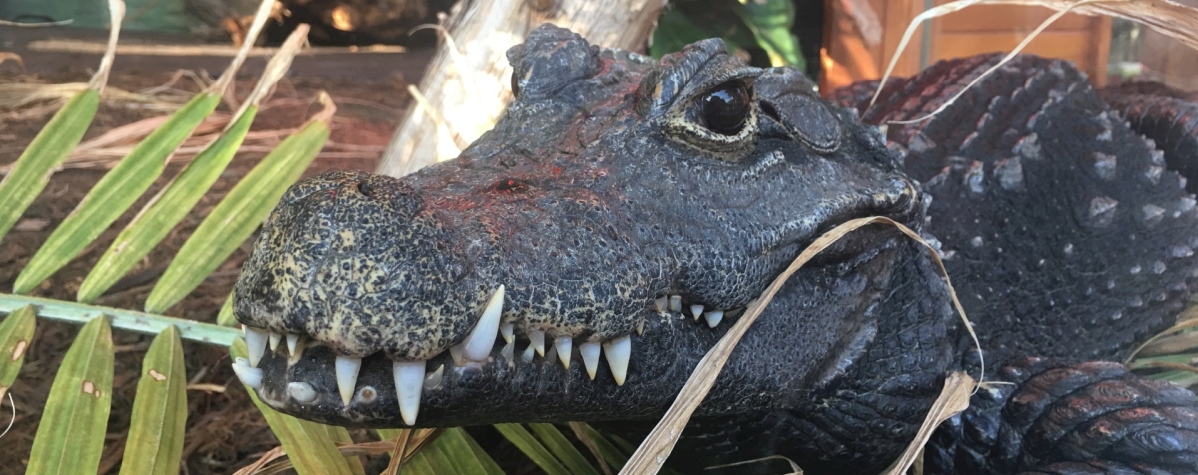North American River Otter
Scientific Classification
| Species |
Lontra canadensis |
| Kingdom | Animalia |
| Phylum | Chordata |
| Class | Mammalia |
| Order | Carnivora |
| Family | Mustelidae |
| IUCN Status | Least Concern |
Appearance and lifespan
The North American River Otter is very streamlined, having a muscular body with short legs, webbed toes and a long muscular tail. The body of the river otter measures between 65 cm to 105 cm (25 to 41 inches) in length and the tail measures 32 to 45 cm (12 to 17 inches) in length. River Otters have a small round head, short powerful legs and large whiskers. River Otters weigh on average between 5 to 14 kg (11 to 30 lbs). Adult male otters are larger than adult female otters. The river otter has nostrils that close while it is submerge in water. The average life span of the river otter is 10 to 15 years in the wild, but can live up to 25 years in captivity.
Behavior and reproduction
River otters are highly active predators. They are very playful in behavior, both on land and in the water. This makes them very popular zoo exhibits. River otters become very aggressive towards humans when they become sexually mature. They are very curious of new things in their habitat and will often follow trout fisherman from a distance. They usually sleep and rear their young in dens of animals such as muskrats along the river’s edge. River otters scent mark their territory using paired scent glands near the base of their tails or by urinating and defecating on vegetation within their home range.
River otters usually mate once a year in late winter or early spring. Mating occurs in the water. There can be a delay in the implantation of the fertilized eggs, resulting in pups being born up to one year after mating occurs. Otter pups are typically born in the spring, but can be born anywhere from spring to November. When the female gives birth, she evicts the male from the den. The gestation period is 2 months and the pups are weaned at 3 months of age. Litter size ranges from 1 to 6 pups with 2 to 3 pups being the average.
Ecology and conservation
The river otter is found throughout most of the United States and Canada. They live in a variety of aquatic habitats. They inhabit lakes, rivers, wetlands, swamps and coastal areas. River otter inhabit areas that have been dammed up by beavers due to the presence of a constant water supply and ample food sources.
In the wild, river otters feed on fish, and eat insects, crustaceans, frogs and sometimes small mammals and young waterfowl.
Food at the Zoo
At the Zoo, they thrive on a fish diet, which is supplemented with meat, small rodents, shrimp and invertebrates. They love smelt and often get smelt in frozen treats.
Threats
In the 1800’s the river otter population declined drastically throughout its entire range due to over hunting and trapping. The river otter is not considered an endangered species although it has been extirpated from much of its former range. Trapping is still permitted in some areas of the U.S. and Canada where this species is abundant. It is estimated that 30,000 river otter pelts are sold each year in Canada and the United States.
Did You Know?
- There are 20 different known subspecies of river otters.
- Water quality is very important in keeping river otters healthy in captivity.
- River otters vocalize with whistles, growls, chuckles and screams.
Adopt the otter
Become a part of the the Riverview Park and Zoo family through our Adopt an Animal Program!


